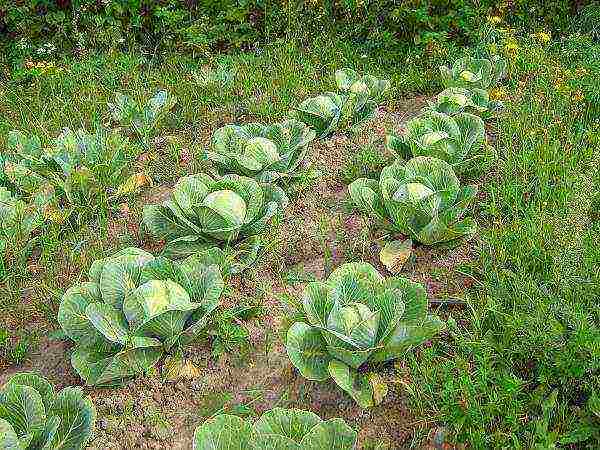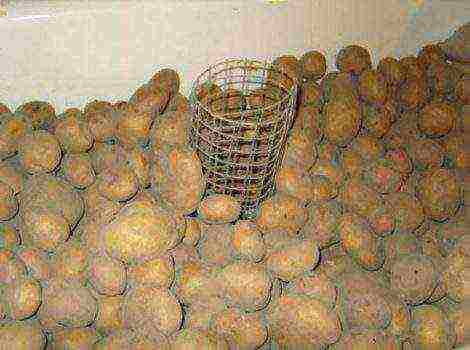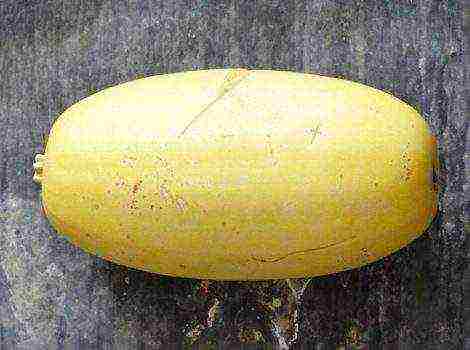Content [show]
Detailed description of the Rinda cabbage variety
Rinda cabbage is a hybrid variety originated in Holland. This variety has gained popularity among Russian gardeners and is one of the best today. Large, tasty heads of cabbage not only have an excellent presentation, do not crack when ripe, but also stored until next spring!
Description and characteristics of the variety
Rinda F1 hybrid is a mid-season cabbage variety. Ripens in 70-90 days from the date of planting in the ground. The weight of a ripe head of cabbage is from 3 to 6 kg. They have a regular ball shape, dense, light green in color. When cut, the head of cabbage is yellow-white. It has a juicy and delicate taste without bitterness.
Advantages and disadvantages
Here is a description of the advantages of the Rinda variety. Moreover, there are plenty of them, because many gardeners annually choose this particular variety for their gardens. It differs in:
- high yield;
- excellent taste;
- storage duration;
- resistance to climate change;
- transportability;
- resistance to popular cabbage diseases;
The disadvantages of this variety include:
- difficult to tolerate prolonged drought, requires frequent watering;
- bears fruit well only in sunny areas. In the shade, the yield is noticeably lower;
- there are many fakes on sale, since the variety is very popular.

Growing conditions for cabbage
Seedlings begin to be planted in April. The seeds are pre-soaked in salt water, and then dipped in hot water for a few minutes. They are planted in a box with soil to a depth of 1-1.5 cm. After 2 weeks, dive - plant in separate containers.
In the shade, it will not be possible to harvest - the heads of cabbage will not be able to tie. Good precursors are legumes, onions, garlic, cucumbers, potatoes, and carrots. But after turnips, watercress or radishes, you should not plant cabbage.
Soil preparation and planting in open ground
Before planting, the site must be prepared. Preparation begins in the fall. The soil needs to be dug up, weeds removed and organic fertilizers applied. Transplantation into unprotected soil occurs 40 days after the appearance of the first shoots. Plants do not often need to be planted. No more than 35 seedlings per 10 square meters. The optimal distance will be 35 cm between shoots and 50 cm in the row spacing.

Care after landing
The Rinda variety is a moisture-loving plant. After planting in unprotected soil, watering should be done at the root every 3-4 days. After 2 weeks, you need to water the entire surface of the garden. On hot days, watering is required more often - after 1-2 days. You need to stop watering 2 weeks before technical ripeness (70 days after planting in the ground).
Rinda has a short stem, so it does not fall over during growth and just one hilling is enough for the entire growth.
Weed removal should not be neglected. They not only prevent the plant from receiving the required amount of light and microelements from the soil, but also spread insects and diseases. Therefore, you need to remove them as soon as they appear and not leave them in the garden!
The cabbage is fed three times during the growing season:
- The soil when planting is a bucket of humus or peat per square meter
- Seedlings when hardening - spray with a composition of 10 liters of water: 1 tablespoon of urea + 1 tablespoon of potassium sulfate.
- Roots with active growth - liquid manure solution

Diseases and their prevention
Despite the high resistance of the variety to diseases, with insufficient care, cabbage can be affected by various pests. Simple preventive measures and timely treatment of plants with fertilizers will help to cope with them.
Preventive measures:
- Weeding and weeding.
- In autumn, all cabbage residues (leaves, legs) are collected and destroyed.
- Compliance with crop rotation - every year you need to choose a new place for planting.
- There is no need to excessively moisten the soil.
When damaged by pests:
- Cabbage aphid (tiny green insects that infect leaves) - tobacco infusion or a solution of laundry soap;
- Downy mildew (gray or brown spots on the leaves) - solution of Bordeaux liquid 1%;
- Keela (a disease of the roots in the form of swelling and white growths that increase) - cannot be treated. Remove damaged seedlings together with a clod of earth and burn. Treat the soil with a purple solution of potassium permanganate;
- Vascular bacteriosis (yellow leaves with black veins, decay of the head) - spray with Planriz solution, repeat the treatment after 20 days;
- cabbage leaf beetle (a small dark green beetle that damages leaves) - dusting with a mixture of ash and tobacco; Actellic.
- Cabbage leaf beetle
- Aphids on cabbage
- Downy mildew on cabbage
Harvesting and storage rules
As a rule, Rinda cabbage ripens at the beginning of autumn. Heads of cabbage ripen at the same time, which is very convenient for harvesting. It is better to schedule the collection for dry, cool weather. Cut off the head of cabbage with a sharp knife at ground level, leaving a long stump.
Compliance with the correct storage conditions is a guarantee of a tasty harvest for the whole winter! The storage room should be dark and cool, about + 1-2 degrees. You also need to periodically ventilate the room to avoid mold. High humidity also helps preserve vegetables. In basements and cellars, as a rule, all of the above conditions are combined.
There are several ways to place heads of cabbage:
- lay out in one row on wooden or plastic pallets;
- put in bags of thick fabric / tarpaulin;
- wrap each head of cabbage in paper, then lay in a row;
- hang it by a stump on a rope.
Properly stored cabbage will delight you with its juicy and delicate taste all winter long.
The Rinda variety is popular with gardeners all over the world. It is appreciated for its high yield rates, excellent taste and the ability to transport without losing its presentation. This variety is good both fresh and fermented, but its suitability is especially noted. Especially for the manufacture of stuffed cabbage. Thin and elastic cabbage leaves do not break during the cooking process, and the dish turns out to be incredibly tasty!


